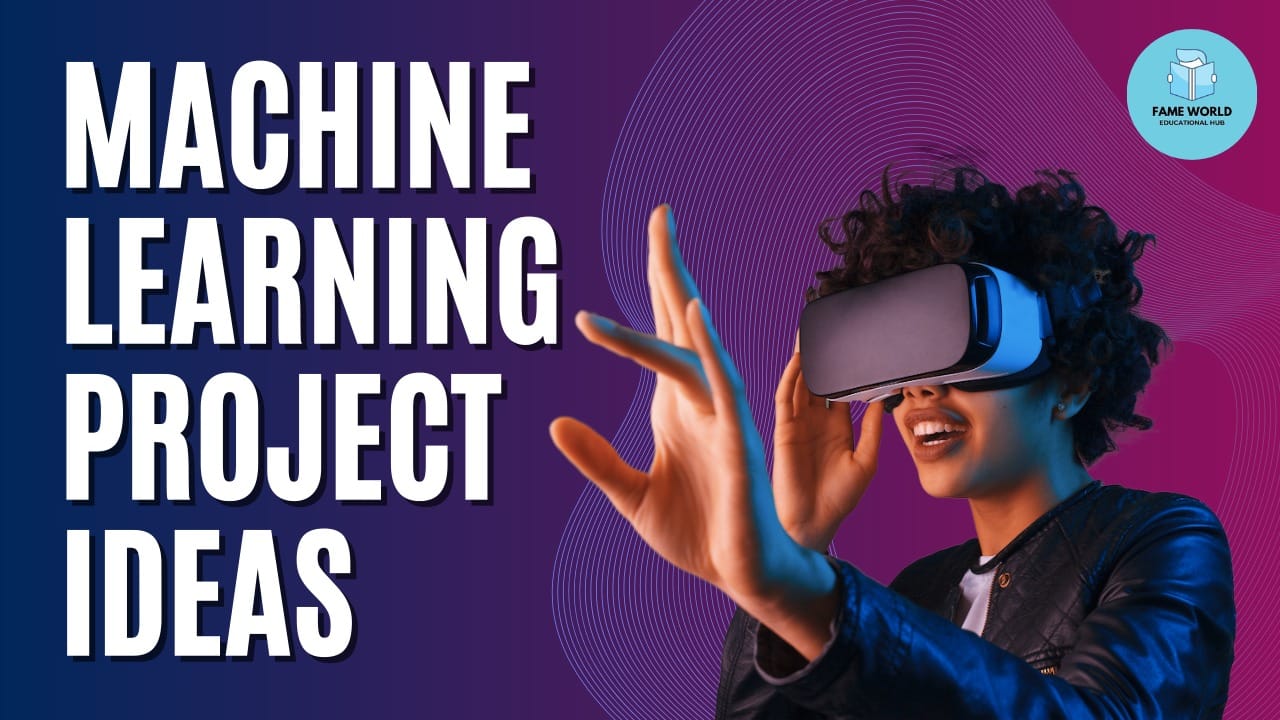Machine learning is a fast-growing field that is being integrated into numerous industries like healthcare, finance, marketing, and more. Whether you’re a beginner or an advanced learner, there’s always something new to explore. Working on projects can help you understand real-world applications, enhance your skills, and build a solid portfolio. In this blog post, we’ll explore various machine learning project ideas ranging from beginner to advanced levels, helping you challenge your skills while having fun along the way.
Table of Contents
- Why Machine Learning Projects?
- Beginner-Level Projects
- Predicting House Prices
- Handwritten Digit Recognition
- Movie Recommendation System
- Intermediate-Level Projects
- Sentiment Analysis of Product Reviews
- Spam Detection
- Image Classification with Transfer Learning
- Advanced-Level Projects
- Object Detection
- Music Genre Classification
- Stock Market Prediction
Why Machine Learning Projects?
Hands-on learning is one of the best ways to understand machine learning. By working on projects, you get to apply theory to solve real-world problems. Projects allow you to:
- Solidify Concepts: Apply ML algorithms and techniques to practical problems.
- Build Your Portfolio: Showcase your skills to potential employers with projects that demonstrate your expertise.
- Identify Strengths and Weaknesses: Discover areas that need improvement while sharpening your existing knowledge.
Whether you’re just starting or have advanced knowledge, building projects will provide you with tangible results.
Beginner-Level Projects
1. Predicting House Prices
Predicting house prices is a classic beginner-level project and a great way to understand regression algorithms. This project involves using historical data such as house features (square footage, number of bedrooms, location) to predict the price of a house.
- Algorithms: Linear Regression, Decision Trees
- Dataset: Kaggle House Prices Dataset
2. Handwritten Digit Recognition
This project involves recognizing handwritten digits (0-9) from images using classification algorithms. The famous MNIST dataset can be used, which contains thousands of labeled images.
- Algorithms: Support Vector Machines (SVM), Neural Networks
- Dataset: MNIST Handwritten Digits Dataset
3. Movie Recommendation System
Recommender systems are used in various online platforms to suggest items to users. In this project, you can build a recommendation system that suggests movies based on a user’s past viewing history.
- Algorithms: Collaborative Filtering, K-Nearest Neighbors (KNN)
- Dataset: MovieLens Dataset
Intermediate-Level Projects
1. Sentiment Analysis of Product Reviews
Sentiment analysis involves analyzing text to determine whether the sentiment is positive, negative, or neutral. This is a great project to understand Natural Language Processing (NLP).
- Algorithms: Logistic Regression, Naive Bayes, RNN (for deep learning)
- Dataset: Amazon Product Reviews Dataset
2. Spam Detection
Spam detection is a common application in emails where the goal is to identify whether a message is spam or not. You can build a model that uses text classification techniques to filter out spam emails.
- Algorithms: Naive Bayes, Random Forest
- Dataset: Spam SMS Collection
3. Image Classification with Transfer Learning
Image classification using pre-trained models (like VGG16 or ResNet) is a powerful project for intermediate learners. Transfer learning allows you to take a model trained on a large dataset and fine-tune it to classify your own dataset.
- Algorithms: Convolutional Neural Networks (CNN), Transfer Learning
- Dataset: CIFAR-10 Dataset
Advanced-Level Projects
1. Object Detection
Object detection is a fascinating project that involves not just classifying objects in an image but also detecting their location. This is commonly used in applications like self-driving cars and facial recognition systems.
- Algorithms: YOLO (You Only Look Once), Faster R-CNN
- Dataset: COCO Dataset
2. Music Genre Classification
For this project, you can build a model that classifies songs based on their genre. This involves analyzing the audio features of songs and applying machine learning algorithms to classify them.
- Algorithms: CNN, RNN, LSTM
- Dataset: GTZAN Music Genre Dataset
3. Stock Market Prediction
Predicting the stock market is one of the most challenging tasks due to its volatile nature. You can use historical stock data to predict future trends or price movements.
- Algorithms: Long Short-Term Memory (LSTM), ARIMA
- Dataset: Yahoo Finance Stock Market Data
Tips for Working on Machine Learning Projects
Start Small: Always start with simple projects before moving to more complex ones. Build your confidence by understanding basic concepts before diving into advanced topics.
Use Clean Data: Data preprocessing is crucial. Spend time cleaning your dataset to avoid issues like missing values and outliers.
Choose the Right Algorithm: Not every algorithm works for every problem. Learn the strengths and weaknesses of each algorithm and select accordingly.
Evaluate and Tune Models: Use different metrics (accuracy, precision, recall) to evaluate your models and tweak hyperparameters for better performance.
Collaborate and Learn: Join online communities, participate in competitions, and collaborate with others to gain new perspectives.
Conclusion
Whether you are a beginner or an experienced professional, working on machine learning projects is an excellent way to improve your skills. By starting with simpler projects like predicting house prices and advancing to more complex challenges like object detection, you will gain practical experience that helps you grow as a machine learning practitioner.
The key is to start small, build up your knowledge, and stay curious. With the world of machine learning expanding rapidly, the possibilities are endless.
What project are you going to start with? Let us know in the comments below!



